There are countless ways to make a summerhouse or other garden buildings your own. One of the easiest and most effective is painting the exterior and interior in colours or designs of your choice. Not only does it give your summerhouse a fresh new look, but it also protects the exterior wood from the elements.
There are many different ideas for painting a summerhouse, from bold and bright colours to more neutral and natural tones that don't overpower the other colours within your surrounding garden space.
One popular option is to choose a colour or colour scheme that compliments the surrounding landscape, such as a soft green or blue. Alternatively, you can opt for a statement colour that contrasts with its surroundings and makes your summer house uniquely stand out, such as a vibrant red or yellow.
Of course, you don't have to stick with one colour for your garden building, so why not consider using two or more colours together to create a unique and eye-catching aesthetic?
Choosing the Right Paint for Your Summerhouse
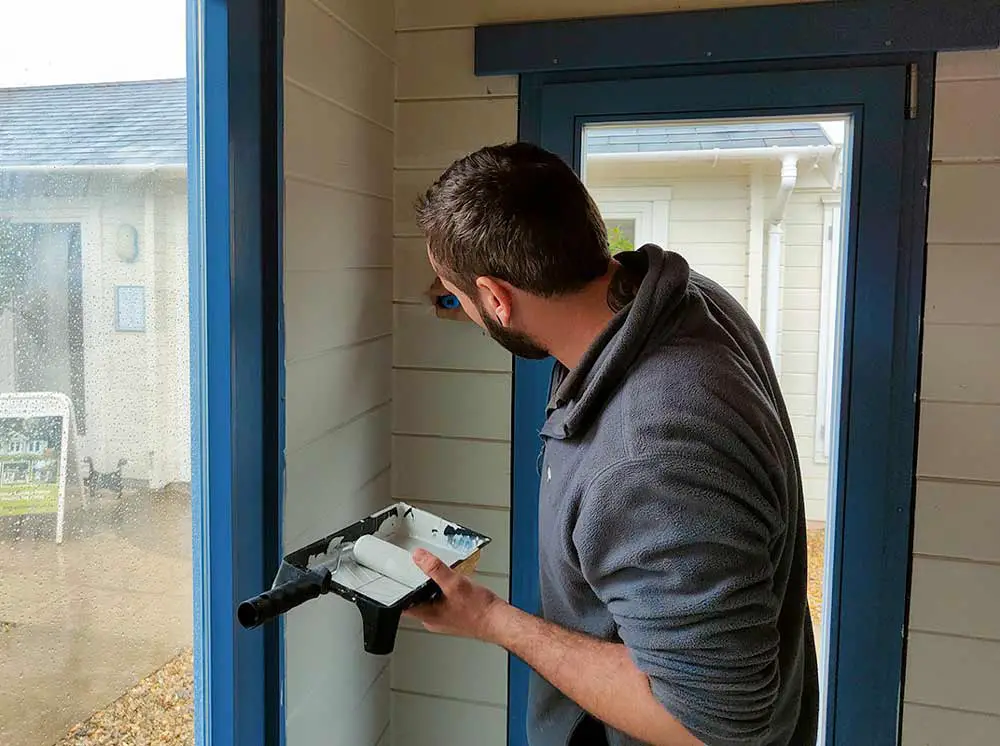
Image credit: gardenaffairs.co.uk
When it comes to painting your summerhouse, choosing the right paint is essential to ensure that it not only looks great but also protects the garden building for many years. There are various factors to consider when selecting the best paint for your summerhouse, including the type of wood that it is constructed from, the location of the summer house, and the look you wish to achieve.
One of the most important factors to consider is the type of paint you want to use. There are several available, including external wood paint, acrylic paint, multipurpose exterior paint, emulsion paint, and oil-based paints. Each has its advantages and disadvantages, so it's important to choose the one that best suits your needs.
External Wood Paint
External wood paint is a popular choice for summerhouses as it is specially formulated to protect the wood from a range of different elements that it will have to endure. There is a wide range of paint colours to choose from with various finishes, including gloss, satin, and matt.
Acrylic paint is another option, which is fast-drying and easy to clean, making it ideal for summer houses that are frequently in use.
Wood Stain
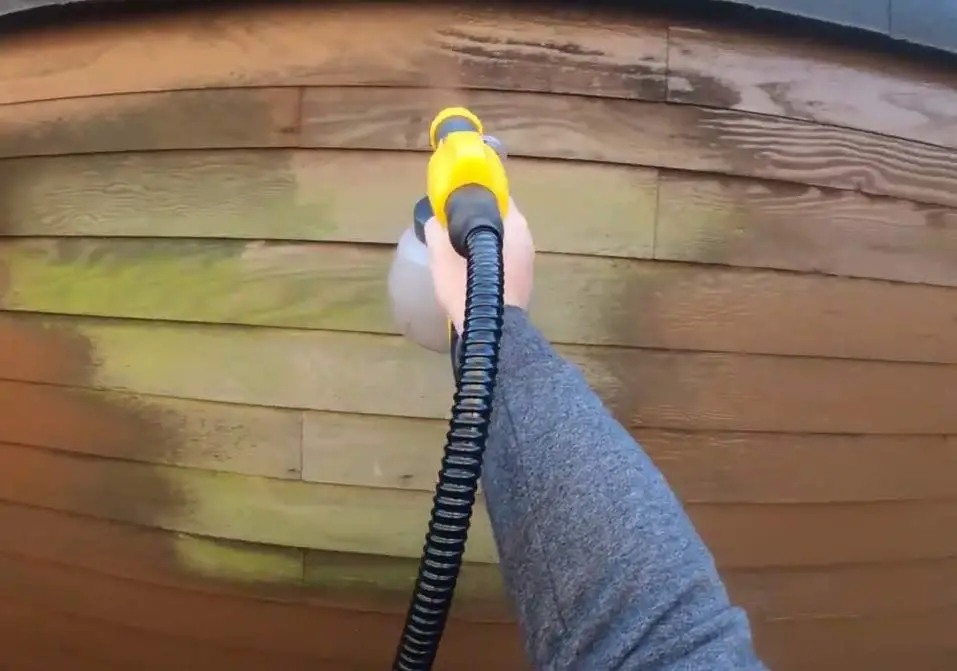
Image credit: gardentoolbox.co.uk
If you want a softer more natural look for your garden building, coloured stains are a great option. They allow the natural grain of the wood to show through while adding a subtle hint of colour. It's important to note however that stains do not provide as much protection as paint, so they may need to be reapplied more frequently.
Emulsion and Oil-Based Paint
Emulsion paint and oil-based paint are also options to consider, but they are not recommended for use on exterior wood as they do not provide the same level of protection as the other paints mentioned.
Location Considerations
Before making a final decision on the type of paint you want to use, it's important to also consider the location of your summer house. If it is in a particularly exposed area, such as near the coast or in an area with high rainfall, you may need to choose a more durable paint that can withstand harsher weather conditions.
Preparation Before Painting your Summerhouse
Ahead of painting your summerhouse, it is essential to prepare the surface properly. Proper preparation will ensure that the paint adheres well and hopefully lasts longer.
Prep and Painting Tools Required
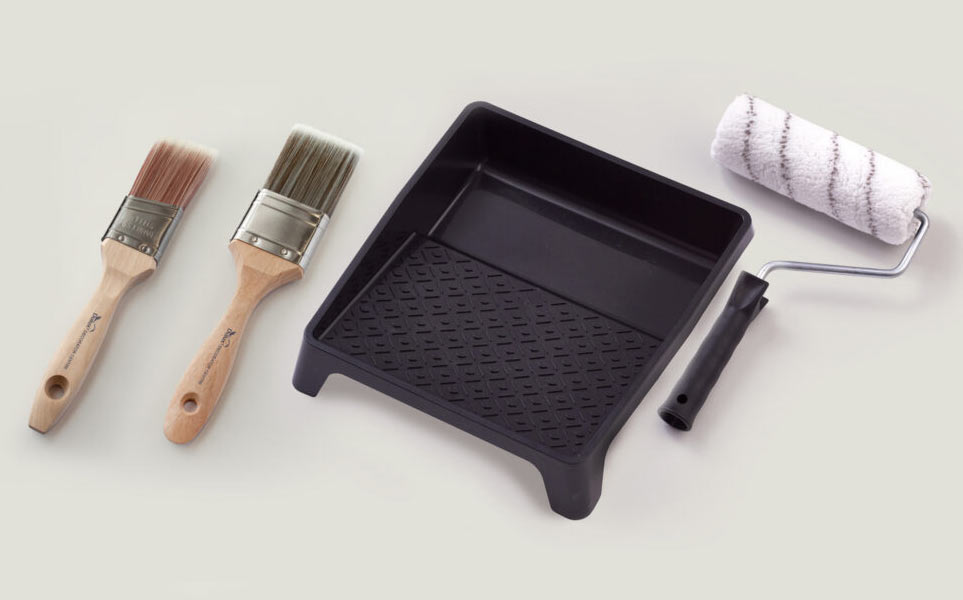
Image credit: thepaintshed.com
The tools required for prepping and painting will depend on the type of paint or stain that you are using and the condition of your summerhouse. Here are some tools that you may need:
- Roller and paint tray
- Paintbrushes
- Sandpaper
- Filling knife
- Masking tape
- Primer
- Wood filler
- Sealant
Initial Preparation
The first step is to clean the surface of your summerhouse. Remove any dirt, dust, or cobwebs using a soft brush or cloth. If there is any loose or flaking paint, you will need to remove it using sandpaper or a scraper.
Once the surface has been cleaned, Use a filling knife to fill any gaps or cracks with filler or apply sealant to make the structure as weathertight as possible. Allow time for any wood filler to completely dry before sanding it down.
Sanding
Using sandpaper or a sand block on the surface of your summer house will help to remove any remaining loose paint, whilst also evening out the surface to create a smoother finish for the paint to adhere to.
A great tip is to firstly sand the entire exterior with rough sandpaper, then once complete use a finer sandpaper to smooth further. Be sure to sand along the grain of the wood to avoid damaging any ridges or trims.
Masking Off
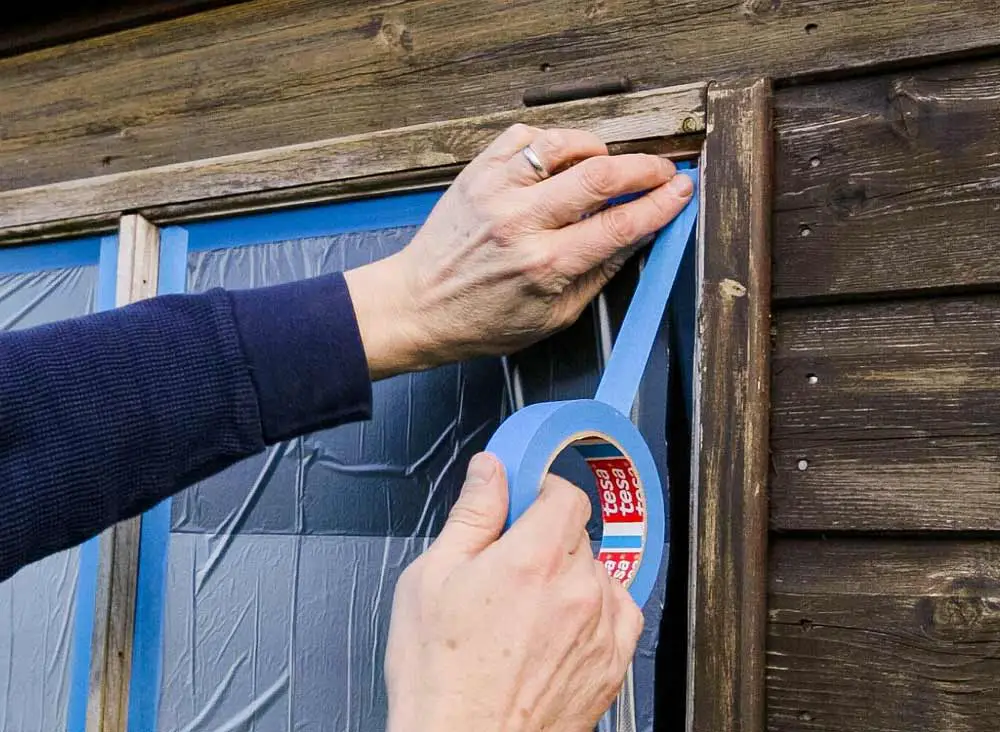
Image credit: tesa.com
Use tacky masking tape to protect any areas that you don't want any paint to go on, such as windows or door frames. Be sure that the tape is firmly in place and covers the entire area you wish to protect.
Apply Primer
Many modern exterior paints have a primer within the formula of the paint and don't require a separate primer paint applying beforehand.
However, if it doesn't, applying a primer is essential to ensure that the paint adheres well and lasts longer. A primer will also help to seal the surface and prevent moisture from penetrating the wood.
Cover the entire area with your chosen primer using a roller or brush, and make sure to cover the entire surface. Allow the primer to dry completely before applying the final layer of paint.
How to Paint a Summerhouse
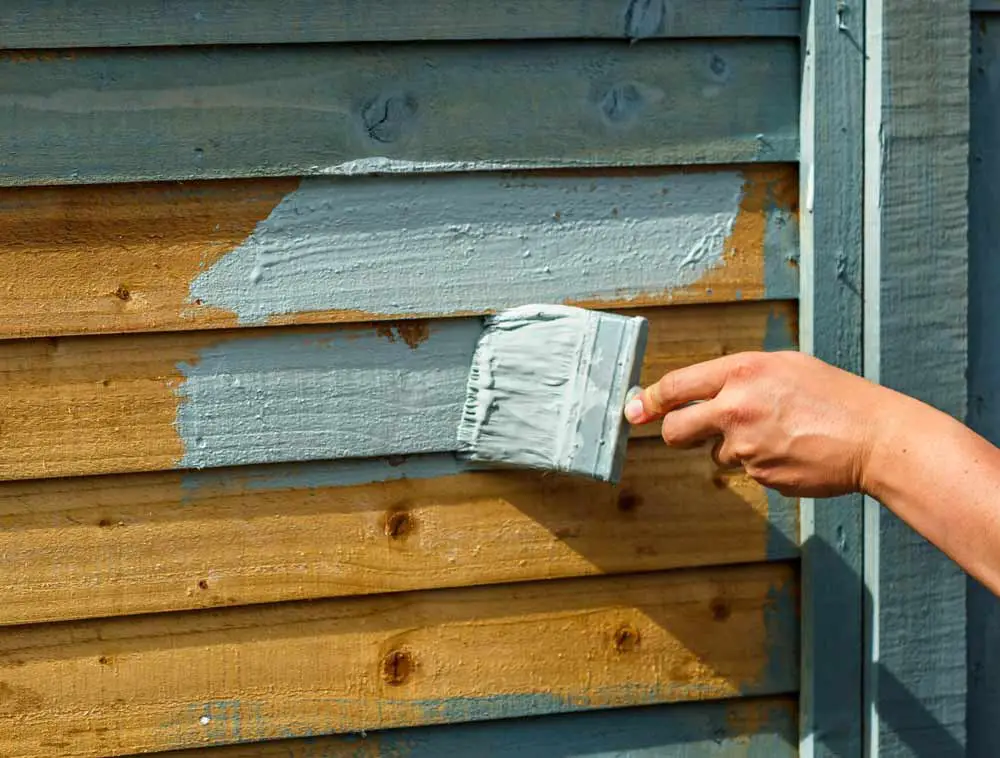
Image credit: promain.co.uk
Adding the final coat of paint to a summerhouse is a rewarding DIY project that can add a new lease of life to your garden room. Here are some steps that I recommend you follow:
Choosing the Right Paint
Choosing the right paint is crucial to achieving the best finish possible. You should choose a paint that is not only suitable for outdoor use but is also specifically designed for use on wood.
There are a variety of finishes to consider, including gloss, satin, and matt. Not forgetting the importance of picking your perfect colour.
Check out our top 7 paints for your summerhouse exterior.
Applying the Paint
To apply the paint, it's important to use a good quality brush or roller as some cheap alternatives will not necessarily give you the quality of finish that you are after.
You should apply the paint evenly, working in the direction of the wood grain and I advise using a few thin coats of paint, rather than one thick coat, Although it will take longer this way, you will end up with a better finish on your garden room and it will also help to prevent drips and runs.
Finishing Touches

Image credit: artistintheshed.com
Once you have finished painting your summer house, you may wish to add some finishing touches. This might include touching up any areas that need it or adding some decorative features such as stencils or patterns.
Summerhouse Painting Tips
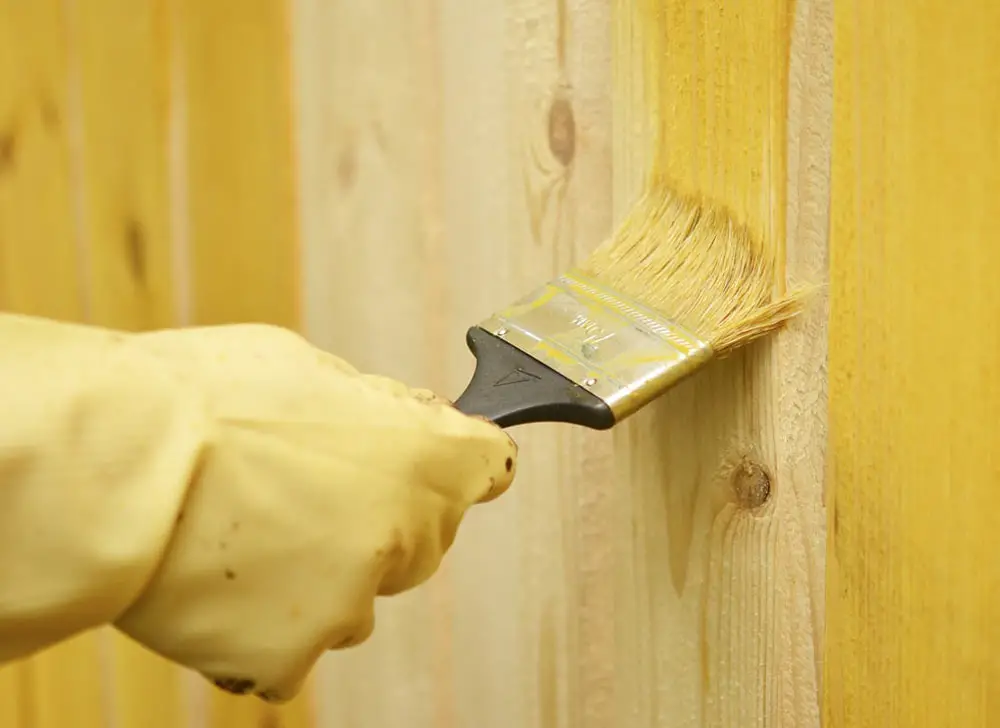
Image credit: surreyhillsgardenbuildings.co.uk
As someone who has painted their fair share of garden buildings, I've learned a few tips and tricks that can make the process go more smoothly. Here are some to bear in mind:
Choose the Right Paint
As mentioned earlier, choosing the right paint in the first place is very important for creating a good long long-lasting finish.
Preparation is Key
It's not about quickly slapping a bit of paint on your summerhouse and hoping for the best. Preparation is key.
Use the Right Tools
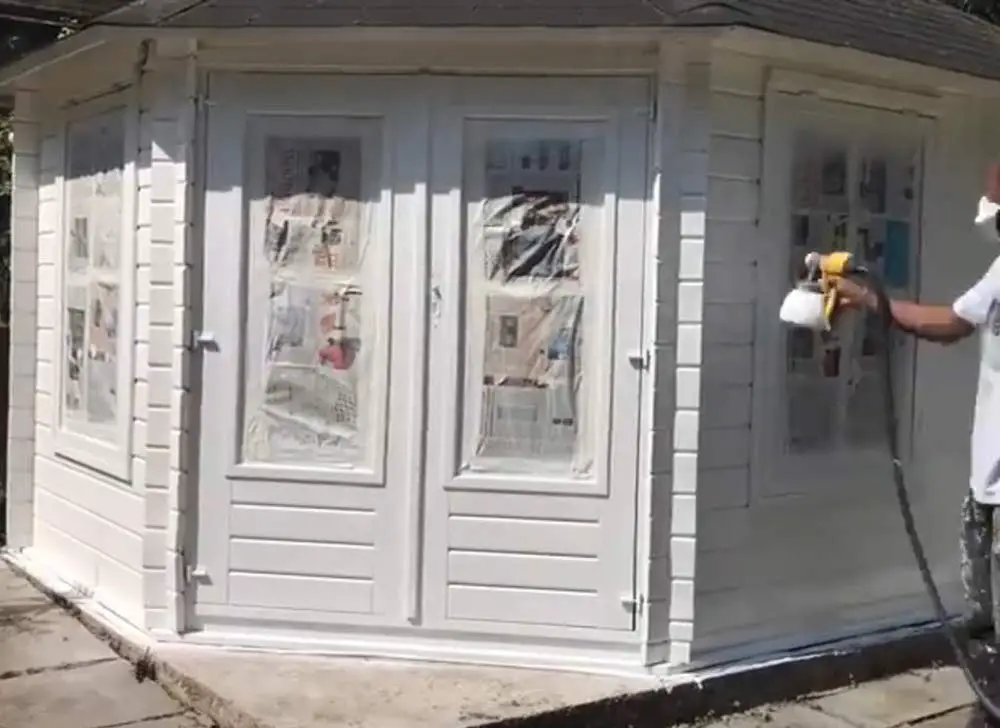
Image credit: Youtube.com
Having the right tools can make all the difference when it comes to painting your summerhouse. Invest in a good quality paintbrush and roller, as well as a paint sprayer if you have a large area to cover. It's also a good idea to use specialist painter's tape instead of masking tape to protect any areas that you don't want to paint.
Take Your Time
Painting a summer house correctly can be a time-consuming process, but it's important to take your time and do it right. Rushing through the job can result in a sloppy finish that simply won't last.
Add Some Colour
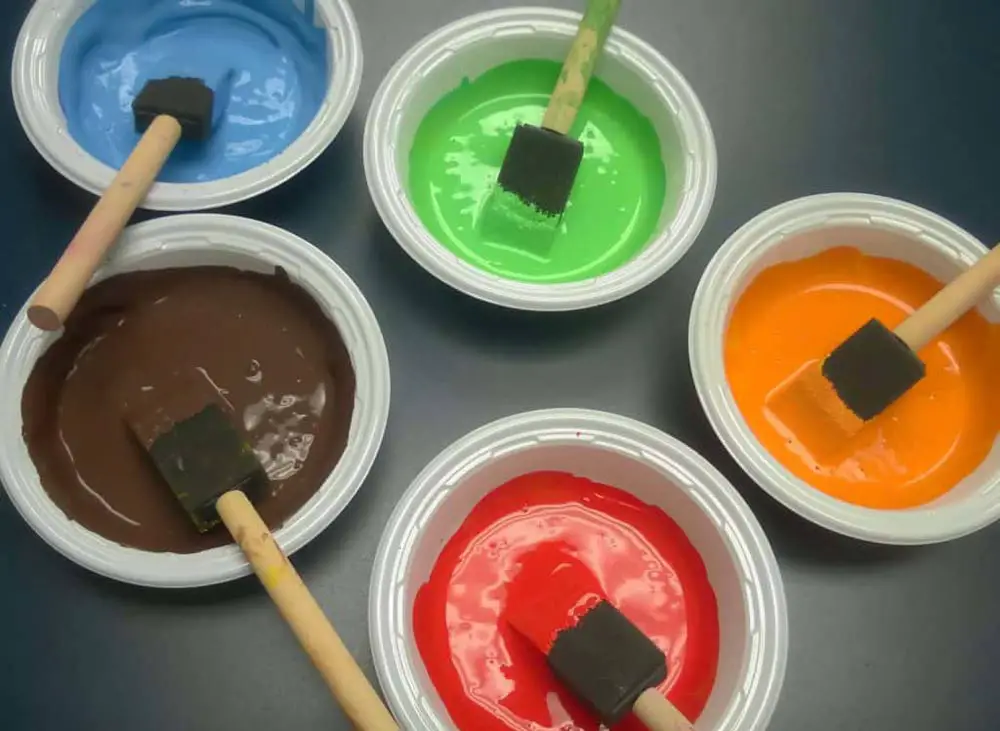
Image credit: gardenbuildingsdirect.co.uk
Finally, don't be afraid to get creative with your summerhouse paint job. Adding a bright, vibrant or unique colour can make your summer house stand out and add some personality to your garden.
Protecting and Maintaining your Summerhouse
Protecting your summerhouse is essential to ensure its longevity and keep it looking great for years to come. The weather, insects and mould can all take their toll on your garden building.
One of the most important steps to protect your summer house is to apply a wood preserver. This will help to prevent moisture absorption, which can lead to mould and rot and in some cases UV protection. A wood preserver will also act as a vapour barrier, preventing moisture from getting into the timber and causing damage.
When choosing a wood preserver for your garden room, look for one that is specifically designed for timber buildings and provides long-lasting protection. Follow the manufacturer's instructions carefully when applying the preserver to ensure maximum effectiveness.
In addition to protecting against the elements, painting or staining your summerhouse can also help to deter an insect attack. Certain types of wood are more attractive to insects than others, so be sure to choose a paint or stain that contains insect repellent.
Finally, it's important to keep your summer house well-maintained. Regularly check for any signs of damage or wear and tear, and address any issues promptly. This will help to ensure that your summerhouse stays in top condition.
Frequently Asked Questions
What is the best paint to paint a summerhouse?
The best paint to use on a summerhouse depends on the material of the summer house and the desired finish. For wooden summerhouses, a wood paint or a wood stain is recommended. For a metal or plastic garden building, a specialist metal or plastic paint is recommended.
It is always important to also choose a paint that is durable, weather-resistant and provides good coverage.
What type of paint is best for a summerhouse exterior?
For the exterior of a summerhouse, it is recommended to use an exterior-grade paint that is specifically designed for outdoor use. This type of paint is formulated to withstand the elements, such as rain, wind and sunlight.
It is also important to choose a paint that is durable and provides good surface coverage. A gloss or satin finish is recommended for the exterior of a summer house as it provides a protective layer and is easy to clean.
Should you paint the inside of a summerhouse?
Painting the inside of a summer house is a personal choice. If you want to create a bright and airy space, painting the interior in a light colour can help to reflect natural light and make the space feel larger.
Alternatively, if you want to create a more cosy and inviting space for your garden building, painting the interior in a darker colour can help to create a warm and welcoming atmosphere.
What colour should I paint the interior of my summerhouse?
The colour you choose to paint the interior of your summerhouse will depend on your taste and the desired atmosphere and look you are trying to achieve.
Light colours such as white, cream or pastel shades can help to create a bright and airy space, whereas darker colours such as navy, grey or green can add a more cosy feel.


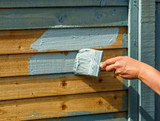
 Author: Matthew Chiappini
Author: Matthew Chiappini